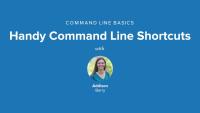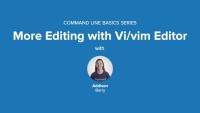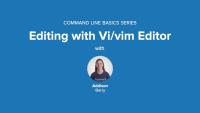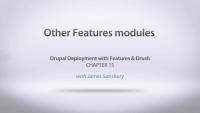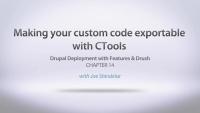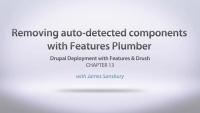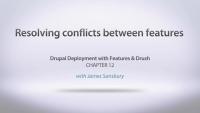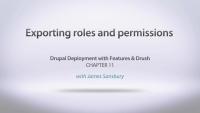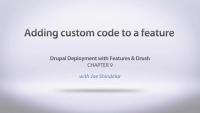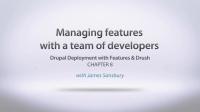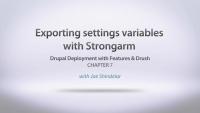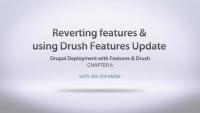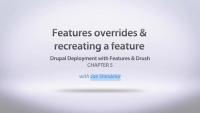You can use custom image sizes for automatic display in your Views!
We already know that being able to set a standard for image display creates consistency and a better user experience. It also makes it for easier site administration because you don’t need to cut all of you images before you upload them. Drupal does all the work for you!! Not only can we specify what the image will look like at the node-level, we can also specify what the image will look like in Views.
I am assuming that you already know how to create custom image style presets, and are familiar with the Views module.
For this tutorial, you need to make sure the Image module that comes with Drupal Core is enabled and that you have already downloaded and enabled the Views module along with its prerequisites.
We will use the example of a blog, where we add our scaled images to display in the listing.
This video covers some handy tips for reusing previously run commands and moving around through a line of text in the command line interface. These shortcuts make working on the command line much faster and nicer. Trying to remember all of these is not easy to do until you've used them for a while, so we also have a handy-dandy cheat sheet which you can find in the Downloads tab and refer to whenever you are in command line ninja mode. There are always new shortcuts you can learn. Another great shortcut !$.. It's similar to !!, but instead of repeating the last command, it repeats the last argument given. This sequence of commands shows how the shortcut could be used: mkdir sites/default/files followed by chmod a+w !$. That would be the same as typing out chmod a+w sites/default/files
Note: this video was originally released July 9, 2010 on Lullabot.com.
Note: In some places the command line prompt is cut-off. The YouTube version of this video doesn't have the cut-off problem. We are working on getting this fixed, but in the meantime, check out the YouTube version instead.
Command Line Basics 12: Handy Command Line Shortcuts (youtube.com)
This video picks up where we left off in the Editing with Vi/Vim video. This time we take a look at some shortcuts for replacing text, how to copy/paste, and the cool visual mode feature you get with Vim Note: this video was originally released August 31, 2010 on Lullabot.com.
Note: In some places the command line prompt is cut-off. The YouTube version of this video doesn't have the cut-off problem. We are working on getting this fixed, but in the meantime, check out the YouTube version instead.
Command Line Basics 11: More Editing with Vi/Vim editor (youtube.com)
The latest sprint we completed for Drupalize.Me was called Pinkie Pie (we name all our sprints after My Little Pony™ characters—yeah, we’re fun like that). And although the name is silly, we took seriously the efforts we made to improve the Drupalize.Me experience for our members.
We’ve been listening to your feedback, and some of the changes we made in this sprint include:
Image Styles
CourseGroup Subscriptions Are Ready!
Blog postWe're happy to announce that we've rolled out group membership options on Drupalize.me. We even created two different approaches, so that you can pick which one works best for your group. The first option will let you buy a set number of accounts for your group (see basic pricing information in our FAQ about groups) and the second gives you unlimited accounts when accessed from a particular range of IP addresses. Here is a brief overview of the two choices and how they work.
This video is about making custom image sizes for automatic display on your site! I am going to show you how you can create custom thumbnail sizes that can be used in your content types.
We already know that being able to set a standard for image display creates consistency and a better user experience. It also makes it for easier site administration because you don’t need to cut all of you images before you upload them. Drupal does all the work for you!! And we can specify the exact site we want to use.
I am assuming that you already know how to update the field display settings in your content type to select an image style preset.
For this tutorial, you need to make sure the Image module that comes with Drupal Core is enabled.
We are going to create an image display that has an aspect ratio of 4”x6”, but much smaller. Then we are going to add a couple other treatments to it so that it fits the theme of Photo Journal.
In this second Vi/Vim video we move on to doing some basic editing (see the Intro to Vi/Vim video for an overview). We cover inserting text in a few different ways, how to delete text, and then how to revert or save your changes. Note: this video was originally released August 9, 2010 on Lullabot.com.
Note: In some places the command line prompt is cut-off. The YouTube version of this video doesn't have the cut-off problem. We are working on getting this fixed, but in the meantime, check out the YouTube version instead.
Command Line Basics 10: Editing with Vi/Vim editor (youtube.com)
As we wrap up and review the series, we also look at other modules that work with, or depend on, Features to provide you a jumpstart.
Additional resources
Features project (Drupal.org)
Introduction to Drush Series (Drupalize.Me)
https://github.com/DrupalizeMe/drupalize-lullablog (GitHub.com)
When you write your own custom modules, you can make them exportable to Features as well. Here we look at how to do that with the Chaos Tools (CTools) module.
Additional resources
CTools project (Drupal.org)
Features will auto-detect dependencies for you, which can be very handy, but at times it can also be very frustrating when you don't want them to. In this video we introduce the Features Plumber module and show you how to use it to finely control your dependencies.
We are sometimes asked how Features can be removed. Since a Feature is just a normal module, you can disable it on your module administration page, and even uninstall and completely remove it from your modules folder. That will completely remove the feature from your site.
Note: The Features plumber module is no longer necessary if you're using Features with Drupal 7. The functionality provided by this module has been included into newer versions of the Features module. So as long as your Features module is up-to-date you should be good to go. The concepts from this video do still apply.
Additional resources
Features project (Drupal.org)
Introduction to Drush Series (Drupalize.Me)
https://github.com/DrupalizeMe/drupalize-lullablog (GitHub.com)
If you have more than one feature module on your site, they can sometimes step on each other and cause nasty conflicts. We'll create some conflicts and show you how this happens and how to back out of them.
Additional resources
Features project (Drupal.org)
Introduction to Drush Series (Drupalize.Me)
https://github.com/DrupalizeMe/drupalize-lullablog (GitHub.com)
One thing we haven't looked at in our feature yet is Drupal roles and permissions. Here we will create a role associated with out Blog feature and look at how we can roll that important bit in.
In this video we are using the Environment Indicator module to visually distinguish between different environments.
Additional resources
Features project (Drupal.org)
Introduction to Drush Series (Drupalize.Me)
https://github.com/DrupalizeMe/drupalize-lullablog (GitHub.com)
Features are most often used for building out actual site features. Here we look at how you can use Features to provide you with quickstart developer tools as well.
Additional resources
Features project (Drupal.org)
Introduction to Drush Series (Drupalize.Me)
https://github.com/DrupalizeMe/drupalize-lullablog (GitHub.com)
Features is a module which generates modules for us. You can then extend that module just as you would any other Drupal module. In this video we'll add some additional code to our feature to make it more complete for our needs, outside of the realm of what Features itself can provide.
The features module (and the drush command) are pretty smart about not overwriting custom changes, and your chances of overwriting your custom code are pretty slim. When features exports a module it creates a .module file with only one line of code in it. Which is an include for another file: mymodule.features.inc. Features then puts all of the automatically generated code into this included file. When you regenerate or update a feature it just uses the existing mymodule.module file which maintains any code that you wrote, and then regenerates the mymodule.features.inc and associated files.
Additional resources
Features project (Drupal.org)
Introduction to Drush Series (Drupalize.Me)
https://github.com/DrupalizeMe/drupalize-lullablog (GitHub.com)
In this video we'll specifically look at using Git as a tool to aid our development process, especially when working with other people, to make sure that you don't step on each others toes and destroy work.
Additional resources
Features project (Drupal.org)
Introduction to Drush Series (Drupalize.Me)
https://github.com/DrupalizeMe/drupalize-lullablog (GitHub.com)
Often you need to create a feature with system variables to make them complete. Features itself does not provide this, but the Strongarm module does, and we'll see how to add that to the mix.
Additional resources
Features project (Drupal.org)
Introduction to Drush Series (Drupalize.Me)
https://github.com/DrupalizeMe/drupalize-lullablog (GitHub.com)
Sometimes when a feature has been overridden we don't want to update the feature, but instead go back to where we were. Here we will look at how to revert a feature, as well as how to use Drush to make these processes much faster and simpler.
Additional resources
Features project (Drupal.org)
Introduction to Drush Series (Drupalize.Me)
https://github.com/DrupalizeMe/drupalize-lullablog (GitHub.com)
In this video we'll look at how you can update a feature by making changes, reviewing overrides, and then recreating the feature for deployment.
Additional resources
Features project (Drupal.org)
Introduction to Drush Series (Drupalize.Me)
https://github.com/DrupalizeMe/drupalize-lullablog (GitHub.com)
We'll take some time to open up the feature we've created and look at the code that was generated so that we can better understand what is going on under the hood.
Additional resources
Features project (Drupal.org)
Introduction to Drush Series (Drupalize.Me)
https://github.com/DrupalizeMe/drupalize-lullablog (GitHub.com)

